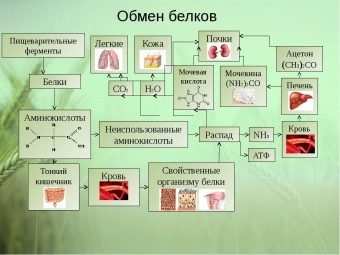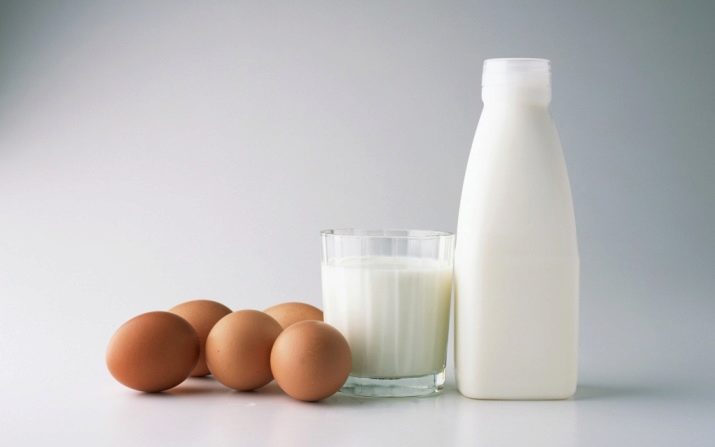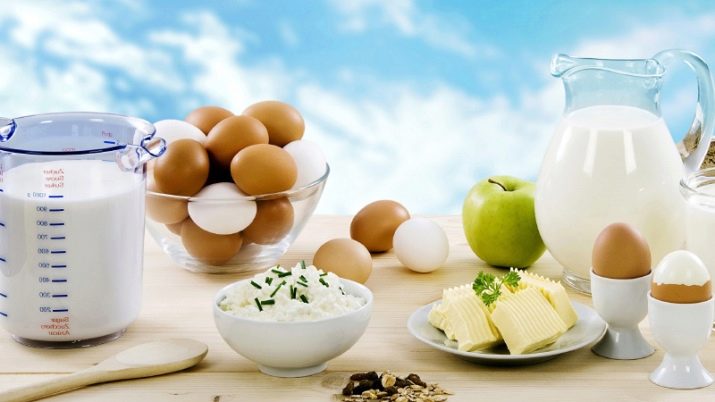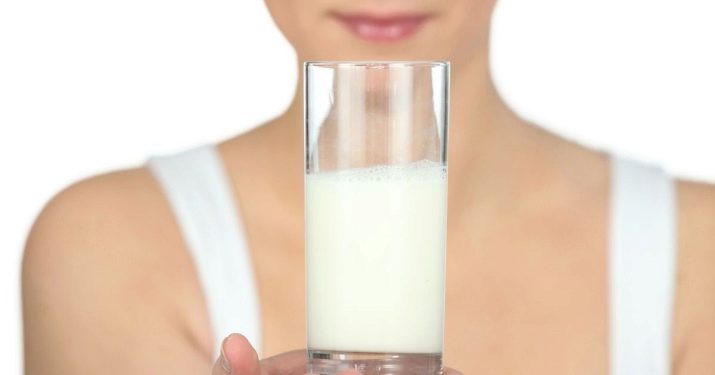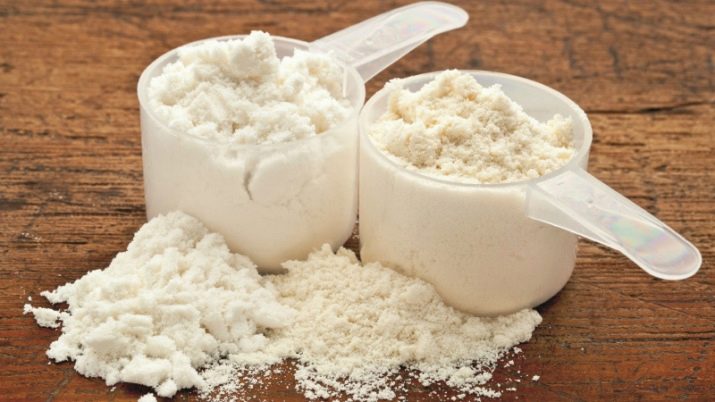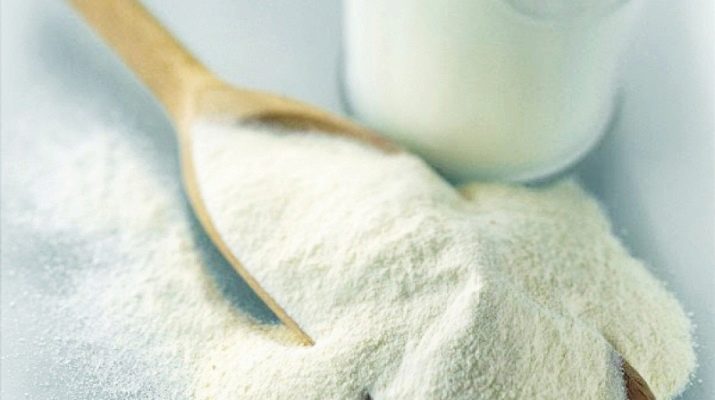Milk protein: what it is, the types and proportion of the content in cow's milk
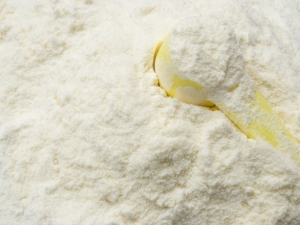
Cow's milk is a valuable nutritious food. Its usefulness is due to the presence of a large amount of vitamins and trace elements.Milk is recommended to be used by all people, and children, expectant mothers, athletes - every day, as milk has a lot of easily digestible protein, which is necessary for building cells of the human body.
What is it and what happens?
One of the necessary substances coming from food into the human body is protein. It is necessary for the synthesis of amino acids, which, in turn, are involved in the construction of proteins of the human body. Amino acids are involved in all vital processes. They provide the formation of muscle tissue and muscle function, are involved in the processes of metabolism and the creation of immunity, are needed to maintain the functioning of the brain and central nervous system.
Part (about half) of amino acids the body is able to synthesize itself. For the synthesis of the second half of amino acids, which are called essential, in the composition of the products in the body must necessarily receive protein. This substance, in fact, is the building material of the human body. It is present in hair, nails, bones, internal organs, and skin.
Protein is directly involved in metabolic processes, is a means for delivering other nutrients to the organs.
The lack of protein is expressed in reduced immunity, weakness of muscles, poor appearance. It is for this reason that the skin becomes flabby and sagging, wrinkles appear.
Proteins can come from both plant food and food of animal origin. However, vegetable proteins are considered inferior, since they do not contain all the necessary amino acids. In addition, animal proteins are better absorbed by the body. Therefore, doctors often oppose vegetarian food, as the deficiency of necessary substances gradually accumulates, which leads to various disorders of the body systems. It is no coincidence that patients after operations, after recovering from severe conditions, weakened children are widely recommended meat broth.
On average, an adult healthy person needs 0.75–1 g of substance per day for 1 kg of body weight per day. For this indicator, gender, age, physiological state, physical activity are taken into account. In certain conditions, athletes, people engaged in heavy physical labor, this indicator should be increased. Depending on their value, proteins in dietetics belong to four classes. The most valuable, belonging to the first class, are contained in eggs and milk.
Milk protein is an easily digestible substance, from which the body receives many benefits. Being unique in composition, it is capable of replacing proteins contained in meat products. He is involved in the production of antibodies to many bacteria and viruses. Milk protein has the ability to neutralize substances detrimental to the body. It is for this reason that milk is given to people working in hazardous industries. Cow's milk contains different proteins. The main one is called casein. Its product is about 80-90%. The rest is the so-called whey proteins.
Casein gives a long feeling of saturation, supplying at this time the internal organs with essential amino acids. Some amino acids increase metabolism, resulting in an acceleration of the fat burning process.
Casein is needed to supply the body with energy, for the synthesis of hormones, to strengthen the structure of hair and nails. It improves blood clotting, stimulates the nervous system. This protein is isolated from milk and used for different purposes. Due to its high nutritional value, it is often used by athletes to quickly build muscle. Casein is widely used in medicine, especially for intravenous nutrition of patients who are unable to consume food on their own. Protein can be found in dermatological creams and surgical glue. Casein is used in industry. On its basis, create artificial food products, paints, plastics, adhesives.
Whey proteins contribute to the rapid replenishment of energy costs, activate metabolic processes, ensure the normalization of the functioning of internal organs. The composition of these substances is similar to the composition of muscle tissue, because they improve muscle recovery, help to reduce pain in them, which is especially important for athletes. With the regular use of such proteins, the acceleration of the breakdown of fats occurs. This, in turn, starts the process of losing weight, which does not affect muscle mass. Whey proteins normalize the production of cholesterol, regulate lipid metabolism, improve blood composition and reduce the level of sugar in it.
They contribute to the production of hormones responsible for stress resistance, relieve irritability, provide rapid sleep and a healthy sound sleep.
The amount in milk
The average average protein content in cow's milk is 3.2%. This figure is not constant, it depends on the fat content of the product - in a more bold mass fraction of proteins is slightly higher. Manufacturers track this figure, it can be 2.8-3.4%. In the whole homemade milk, not subjected to treatments, the limits of this indicator are even wider: 2.7-4.1%. It is influenced by many factors. First of all, it is a breed of animals. People far from agriculture may not know the fact that there are meat, meat and dairy and dairy breeds. In the milk of meat breeds of cows, proteins will be contained more than in milk of dairy, meat and dairy. The protein itself is represented mainly by casein, whey proteins are very small. In addition, milk breeds give little meat.
Other factors affecting the amount of protein, this time of year, the composition of the feed, the functional state and conditions of animals. The milk we consume contains 2.8-3.5 g of protein per 100 grams of product. It may seem that less than 10 g of a substance in 100 ml of a product is very small when calculating 1 g of protein per 1 kg of human weight. However, by simple calculations one can find out that in a regular glass with a volume of 250 ml there will be 7-8.75 g, and in a liter 28-35 g of the substance. If we consider that the caloric content of milk is only 45-65 kcal per 100 g, then it turns out that it is a lot. In addition, during the day we consume other foods that contain proteins. With a balanced diet, a person must receive all the necessary substances for the body.
How is it absorbed?
Getting protein from food is very important to ensure the processes of life. But, even having received the necessary amount of them, the body does not always absorb them completely. The digestibility is influenced by various factors: diet, food composition, method of culinary preparation, the state of the body. Milk protein is unique not only for its composition and ease of assimilation, but also because it is absorbed by almost 100%. However, casein and whey proteins are digested differently.
It takes a lot of time for the body to absorb casein. However, this is not a reason to rank it as a “heavy” product, which requires a lot of efforts from the body to digest. Casein is broken down slowly, supplying the body with a gradual and even flow of amino acids into the circulatory system, into the internal organs. A long period of assimilation of casein will be useful to people engaged in intense physical exertion, heavy monotonous work, intellectual activity.
This feature for a long time to maintain a constant level of amino acids is often used by athletes. They take a dairy product before bedtime, and they have a recovery and muscle supply with building material during the night's rest. This feature of casein is related to the fact that in the stomach, when exposed to gastric juice, it is converted into fairly large clots, and they require a long period of processing with a large number of enzymes. The process of processing casein is associated with a long feeling of satiety.This feature can be used by those who wish to lose weight.
A glass of milk in the evening with a small amount of calories will provide a feeling of satiety and may well replace a light dinner.
Unlike casein, whey proteins are absorbed almost immediately after admission.
Since they have a balanced composition of amino acids and are presented in a form that is convenient for the body to assimilate, they instantly supply the blood and internal organs with beneficial substances. This phenomenon contributes to the rapid replenishment of energy costs, improvement of metabolic processes, the normalization of the work of organs and systems. Whey proteins are needed by people after hard physical work, enhanced mental activity. The ability of these substances to activate metabolic processes and promote the breakdown of fats is also suitable for people who want to normalize their weight.
Unfortunately, not all people are assimilated milk proteins. In some cases, they cause an allergic reaction, manifested in difficulty breathing, rashes on the skin and itching, disorders of the digestive processes, deterioration of the skin color. Allergies can be triggered by genetic predisposition, hormonal disruptions, stress, pathological chronic conditions. In such cases, you should consult with your doctor on the question of how to replace milk protein.
Learn more about the milk protein from the video.


